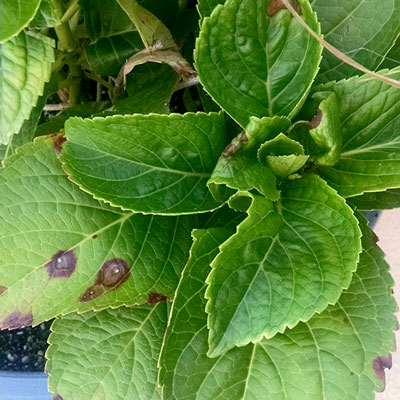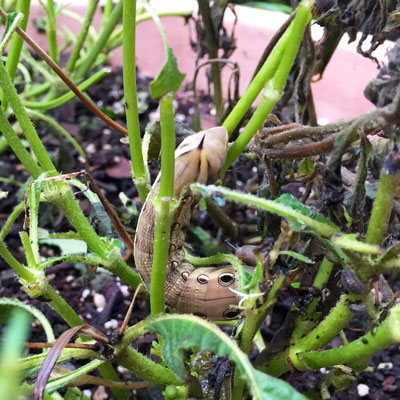Question of the Week
“Something has eaten holes in my plants’ leaves. Should I treat for the problem?”
Actually, that’s a composite question made up from about 25 inquiries I’ve had in the past couple of weeks. In some cases it’s late-season caterpillars that have chewed into leaves, either now or at some point in the past two or three months. In other cases, it’s leaves that have suffered sun scorch or drought damage. And in a few cases, actual diseases have been involved (usually dating back to the wet weather of spring).


The one common thread through almost all of these problems is that they happened at some time in the past – they’re not actively happening now. So unless you see damage showing up on the newest, most vulnerable growth, my answer would usually be that it’s not necessary to treat this late in the growing season. It’s been warm this week, but remember that it can be very cold (as in frosts and freezes) in just 6 or 8 weeks. Even if your treatment would stop current damage in its tracks, there wouldn’t be a lot of time for regrowth before winter.

Of course, there are obvious exceptions. If you have cole crops (broccoli, cabbage, kale, cauliflower, Brussels sprouts) in your vegetable garden, cabbage loopers may soon be feeding on them voraciously. Fall webworms may make your shade and nut trees very unattractive (prune them out, don’t spray). Stinging caterpillars may show up on shrubs and trees. Patio pots may have pests that could come indoors with them as winter approaches. These are all examples of pests that should be addressed if they show up. Just use your common sense.
